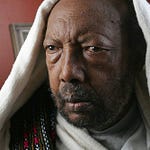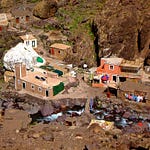Hello Friends,
We continue this week with three versions of the story of how the Bamaya Dance of the Dagomba came into being. The Bamaya is a popular Dagomba dance which features men dressed as women, performing a dance which, depending on the origin story you believe, started as a desperate bid to appease angry gods, or emerged from the mockery of an unfortunate thief.
The word Bamaya means, “The river valley is wet” and given the origin stories, I have so many questions and theories but, anyway, here is a picture of a Bamaya dancer!

Can’t Get Enough?
Watch a short performance of the Bamaya dance below.
Another Bamaya performance
References
Cameron, Elisabeth L. “Men Portraying Women: Representations in African Masks.” African Arts, vol. 31, no. 2, 1998, pp. 72–94. JSTOR, https://doi.org/10.2307/3337523. Accessed 15 July 2024.
Epprecht, Marc. Boy-wives and female husbands: Studies in African homosexualities. State University of New York Press, 2021.
Resario, Rashida. "The visible and the invisible in the visual culture of the Ghana Dance Ensemble." Visual Cultures of Africa. Germany, Waxmann, 2022. p49
Welsh-Asante, Kariamu, ed. African dance: An artistic, historical, and philosophical inquiry. Africa World Press, 1996. p16













Share this post